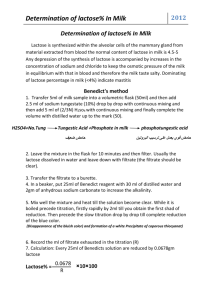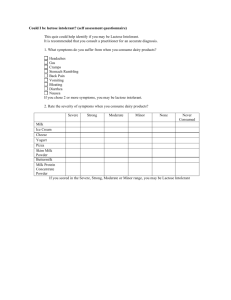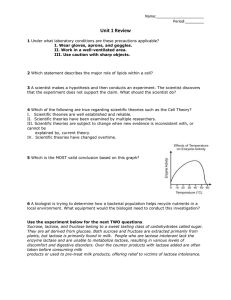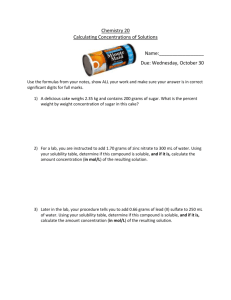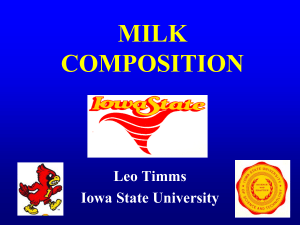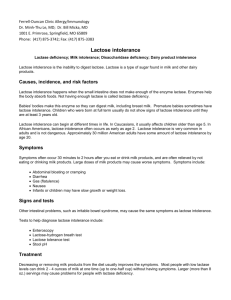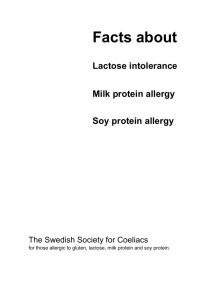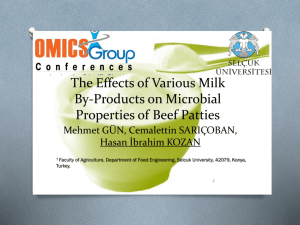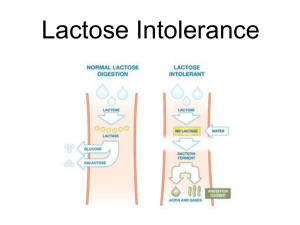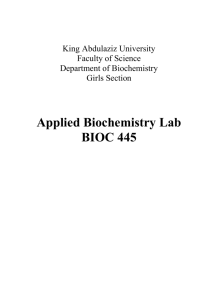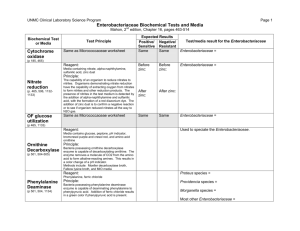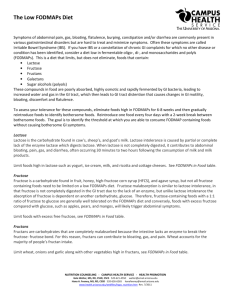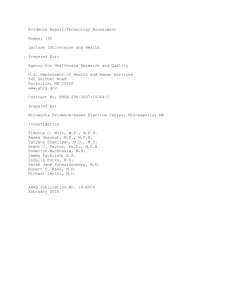Lactose Estimation - Biochemistry and Molecular Biology
advertisement
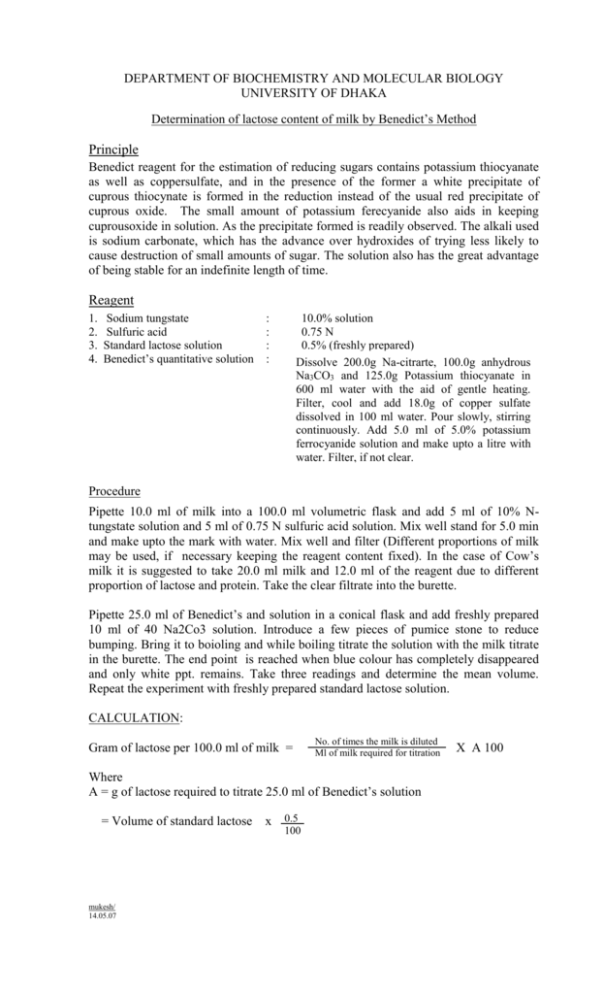
DEPARTMENT OF BIOCHEMISTRY AND MOLECULAR BIOLOGY UNIVERSITY OF DHAKA Determination of lactose content of milk by Benedict’s Method Principle Benedict reagent for the estimation of reducing sugars contains potassium thiocyanate as well as coppersulfate, and in the presence of the former a white precipitate of cuprous thiocynate is formed in the reduction instead of the usual red precipitate of cuprous oxide. The small amount of potassium ferecyanide also aids in keeping cuprousoxide in solution. As the precipitate formed is readily observed. The alkali used is sodium carbonate, which has the advance over hydroxides of trying less likely to cause destruction of small amounts of sugar. The solution also has the great advantage of being stable for an indefinite length of time. Reagent 1. 2. 3. 4. Sodium tungstate Sulfuric acid Standard lactose solution Benedict’s quantitative solution : : : : 10.0% solution 0.75 N 0.5% (freshly prepared) Dissolve 200.0g Na-citrarte, 100.0g anhydrous Na3CO3 and 125.0g Potassium thiocyanate in 600 ml water with the aid of gentle heating. Filter, cool and add 18.0g of copper sulfate dissolved in 100 ml water. Pour slowly, stirring continuously. Add 5.0 ml of 5.0% potassium ferrocyanide solution and make upto a litre with water. Filter, if not clear. Procedure Pipette 10.0 ml of milk into a 100.0 ml volumetric flask and add 5 ml of 10% Ntungstate solution and 5 ml of 0.75 N sulfuric acid solution. Mix well stand for 5.0 min and make upto the mark with water. Mix well and filter (Different proportions of milk may be used, if necessary keeping the reagent content fixed). In the case of Cow’s milk it is suggested to take 20.0 ml milk and 12.0 ml of the reagent due to different proportion of lactose and protein. Take the clear filtrate into the burette. Pipette 25.0 ml of Benedict’s and solution in a conical flask and add freshly prepared 10 ml of 40 Na2Co3 solution. Introduce a few pieces of pumice stone to reduce bumping. Bring it to boioling and while boiling titrate the solution with the milk titrate in the burette. The end point is reached when blue colour has completely disappeared and only white ppt. remains. Take three readings and determine the mean volume. Repeat the experiment with freshly prepared standard lactose solution. CALCULATION: Gram of lactose per 100.0 ml of milk = No. of times the milk is diluted Ml of milk required for titration Where A = g of lactose required to titrate 25.0 ml of Benedict’s solution = Volume of standard lactose mukesh/ 14.05.07 x 0.5 100 X A 100
